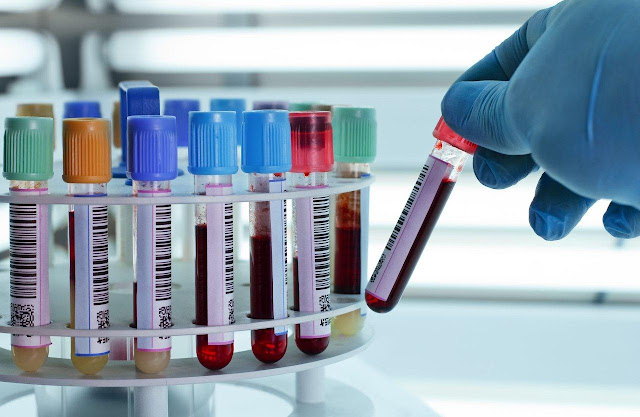Essential Diagnostic List - another step towards a Healthy India (PART I)
WHO’s latest
announcement on introducing an Essential Diagnostic List further emphasizes the
need to widen the reach of important diagnostic tests for timely disease
management. The good news is India has taken the lead to develop its own
National EDL. What needs to be seen is how the government and the industry come
together to integrate the EDL to further boost the efforts towards a Healthier
India.
The impact of
global warming is not just on our melting glaciers. The rampant spread in
infectious diseases, both new and old; has become a big concern for the
healthcare specialists. Gone are the days when malaria was associated only with
monsoons. Weather variations bring with it the unpredictable onset of host of
diseases, further pushing the health machinery into action to contain the
spread. The recent outbreak of Nipah virus in Kerala, once again highlights the
crucial role played by diagnostic tests for the precise and early detection of
emerging diseases. Clinicians have long relied on error-free diagnosis in
addition to symptoms, for appropriate disease management. Unfortunately, half
of the under developed & developing countries still prescribe medication
without a confirmed laboratory test; culminating in multiple drug resistances.
Accessibility
to reliable and affordable diagnostic tests continues to pose a greater
challenge in the healthcare value chain. Considering the indispensability of
medical diagnosis, the WHO has finally released the first model list for Essential
Diagnostics. EDL just like its counterpart- Essential Medicines List (EML), is
a list of essential tests which each country should have at minimum affordable
prices. It is intended to serve as a reference to the country programmers to
draft their own EDL based on national or regional burden of disease, unmet
needs and priorities. The ultimate objective is to ensure availability of the selected
tests at various levels of tiered national health care, be it the PHCs or SHCs.
Thus, EDL will complement the already present EML and enhance its impact on universal
health coverage, addressing health emergencies, and promoting healthier
populations; the three strategic priorities of the WHO Thirteenth General
Programme of Work (2019–2023).
The good news
is, India has taken the lead, in initiating its own model EDL, spearheaded by
ICMR with active participation from WHO India, McGill University and industry
and government officials. While we are all aware of the mammoth task that lies
ahead, the proposed EDL, while concentrating on in-vitro tests like tests of
blood and urine, is expected to address detection, diagnosis and monitoring of
'priority' diseases such as HIV, tuberculosis, malaria, hepatitis B and C,
human papillomavirus and syphilis.
In a nutshell,
the EDL will impact healthcare as well as diagnostic manufacturers in India as
well as globally by acting at multiple levels. In this edition of the two part
series, let us first identify the impact
on healthcare:
The Indian Government recently announced the 'Ayushman Bharat’ scheme, intended to make
healthcare free for the financially marginalized section of the society,
through government aided health insurance services. An EDL will thus help
provide easy access of essential
diagnostics to these patients.
In the case of
Ebola and Zika elsewhere, a wide time gap was experienced between the outbreak
of the epidemics and its confirmed diagnostic recognition, highlighting the
need for diagnostic facilities at every tier of the health system. An EDL is
set to increase the laboratory capacity at every level and in turn help
countries like India in their readiness
for any epidemics.
In 2013, The Initiative for Promoting Affordable & Quality TB tests (IPAQT), was launched to bring
together various private labs and test manufacturers to provide the most advanced
diagnostic assays from GeneXpert at almost 50% of the original price. In a
similar manner, an EDL will encourage
bulk purchasing of the essential
diagnostics by international organizations, a practice commonly followed
for critical vaccines & drugs. Thus these larger predictable volume sale
& pooling methods would enable
manufacturers to lower their prices making these tests affordable to patients.
Anti Microbial
Resistance (AMR) is becoming a growing concern in India, especially in
the treatment of TB, and this is where EDL could play a crucial role in
tackling this menace. Unnecessary antibiotic use can be avoided with the
introduction of high quality point of care testing to differentiate between
virus and bacterial infections, and minimizing more and more strains of these
pathogens becoming resistant. Further, this can be made efficient by collecting
data from low and middle income countries on resistance patterns to inform
policy makers on actions required, and ensuring proper treatment.
Listing of essential diagnostics is
meaningless in the absence of standard practice by the laboratorians.
Inefficient training is a major concern not only in under developed countries but
also developing countries like ours. EDL can be used as a reference by the national
laboratory accreditation bodies to establish
a quality assurance system in low tier labs by training of professionals if required.
Poor infrastructure and
inefficient supply chain often cripple all kind of initiatives that policy
makers undertake. The National Rural Health Mission (NRHM), under National
Health Mission is a government initiative to address the health needs of
under-served rural areas. They could refer to EDL and ensure the necessary infrastructure and better supply chain management at Primary Health Centres (PHCs)
and Community Health Centres (CHCs).
One of the issues that low tier
healthcare facilities face is the availability of sub-standard diagnostic
tests, which often lead to false negative results. As a result, physicians
often administer treatment even if the patient is not diagnosed for a
particular infection. Physicians will thus have more confidence when they have
access to standardized, advanced
diagnostic tests, enlisted under the EDL.
Policy makers regularly seek
data on disease burden and efficacy of the interventions. An EDL
along with an EML can be referred by the organizations involved in
national surveys, thus providing the
much needed data to the health care policy makers.





Comments
Post a Comment